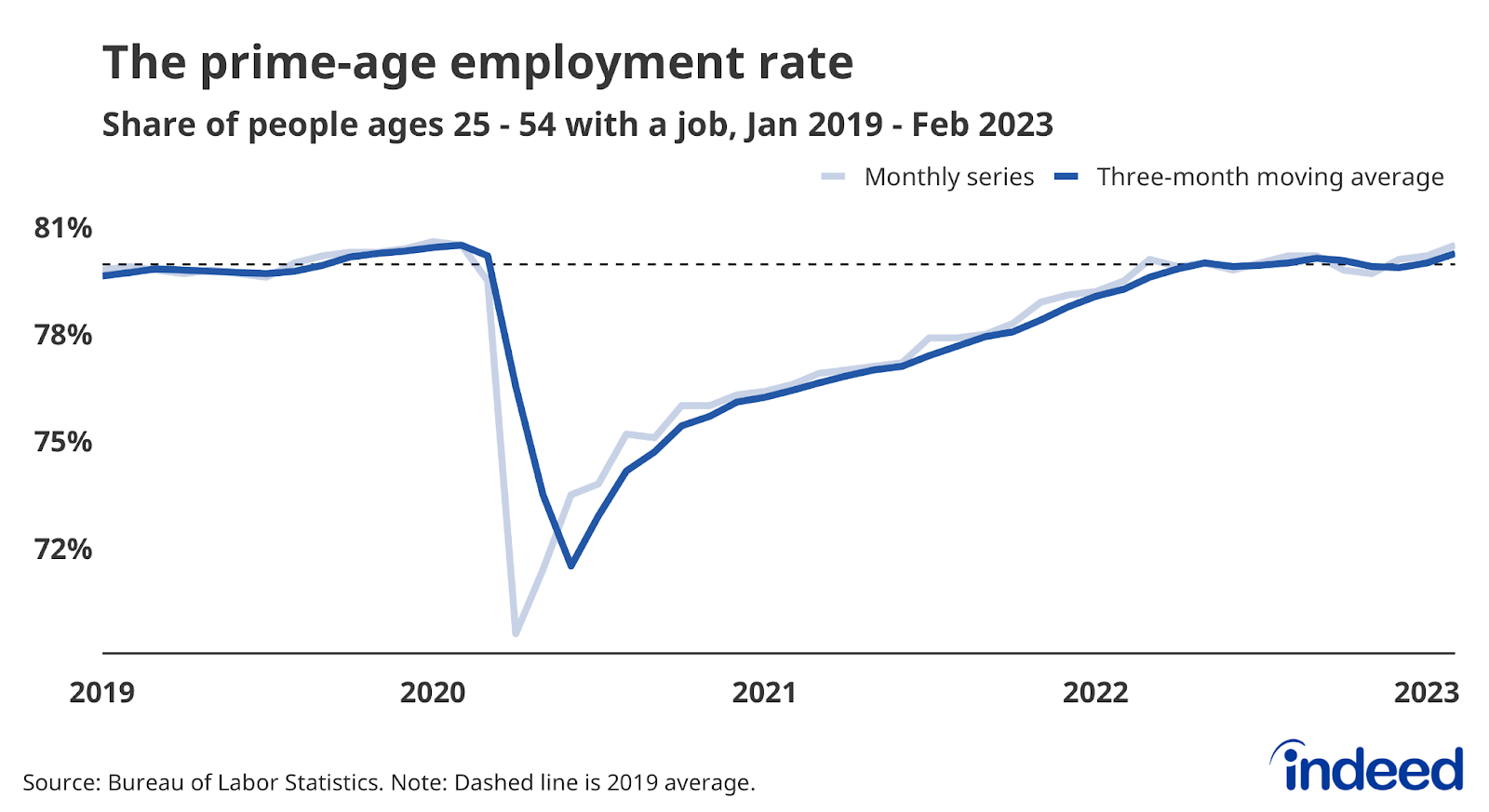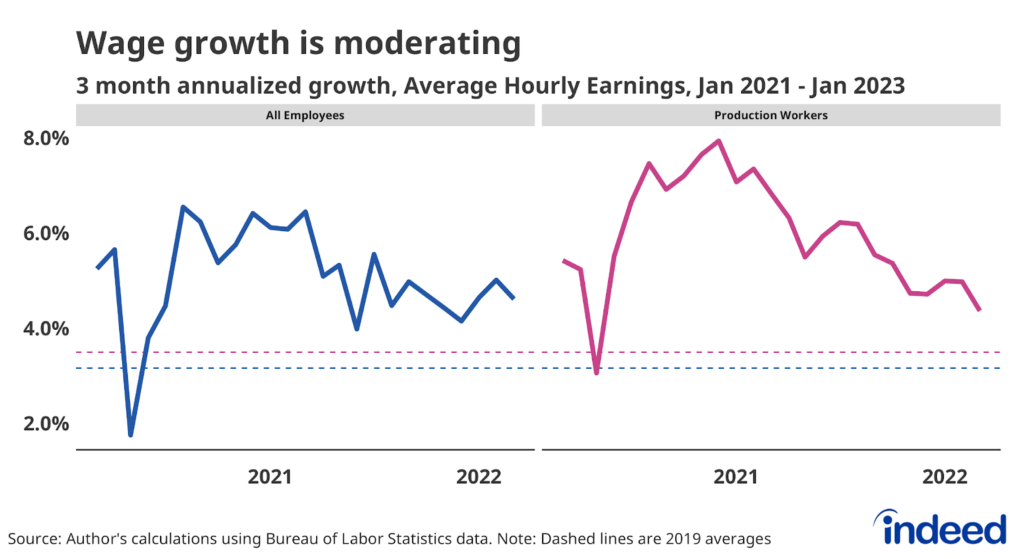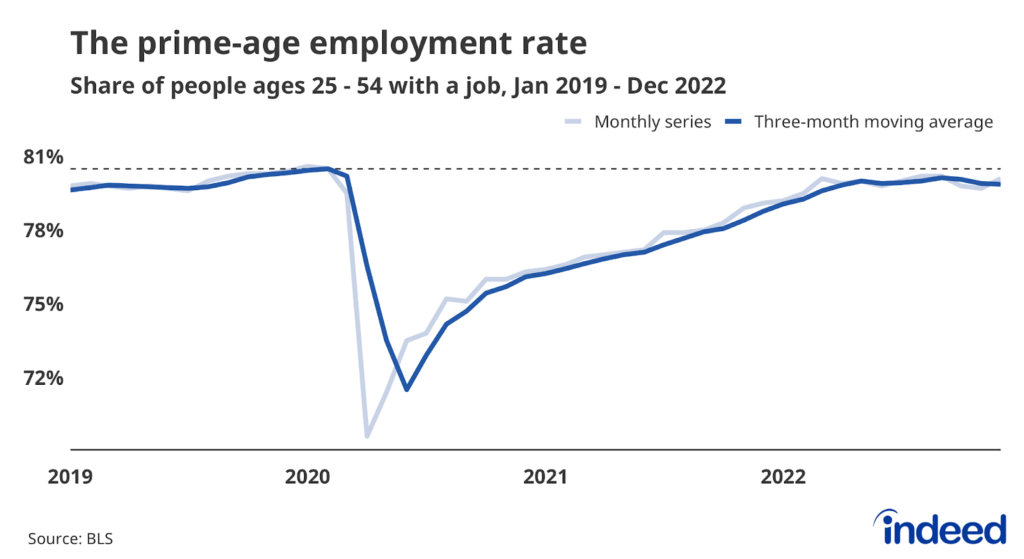Key Points:
- U.S. employers added 311,000 jobs in February and the unemployment rate edged up to 3.6%, according to data from the Bureau of Labor Statistics.
- The prime-age labor force participation rate now stands above its pre-pandemic levels, and 80.5% of prime-age adults currently hold a job.
- Average hourly earnings grew at a 3.6% annualized rate over the past 3 months, a strong but largely sustainable pace that could indicate continued strength in the labor market without pouring additional fuel on the inflation fire.
The labor market continues to defy expectations as employers add jobs at a rapid pace and unemployment remains low. Today’s report is chock full of data showing a labor market with high levels of demand for workers and historically low levels of joblessness. Job gains this strong and unemployment this low might be concerning in the face of stubbornly high inflation, but there are signs that the labor market is heading toward a strong, stable, and sustainable pace of growth.
Concerns about labor supply have been pervasive during this recovery, but this new data should ease some nerves. The prime-age labor force participation rate jumped in February and is now slightly above its early 2020 levels. The story is similar for the share of those prime-age workers with a job, which now sits at 80.5%. Three years after the last pre-pandemic jobs report and this core demographic group is back to work. Of course, there are still structural concerns about labor supply, but the current rebound suggests that strong demand can continue to pull people back into work.
At the same time, wage gains look to be moderating. Average hourly earnings for all workers grew at a 3.6% annualized rate over the past three months, a speed that while still high is more consistent with moderating inflation. Wages continue to grow rapidly in many sectors, but the overall trend is suggesting that wages can slow without a spike in unemployment. If wages continue to grow around their current rate or even a bit higher, the labor market may be able to stay strong and not throw gas on the inflation fire.
Three years after the beginning of the pandemic the labor market is a source of strength. Demand is high if moderating, and the key parts of the population are returning to the labor force, resulting in strong but more sustainable wage gains. This is a strong foundation for the US economy. Hopefully, it can weather future storms.



